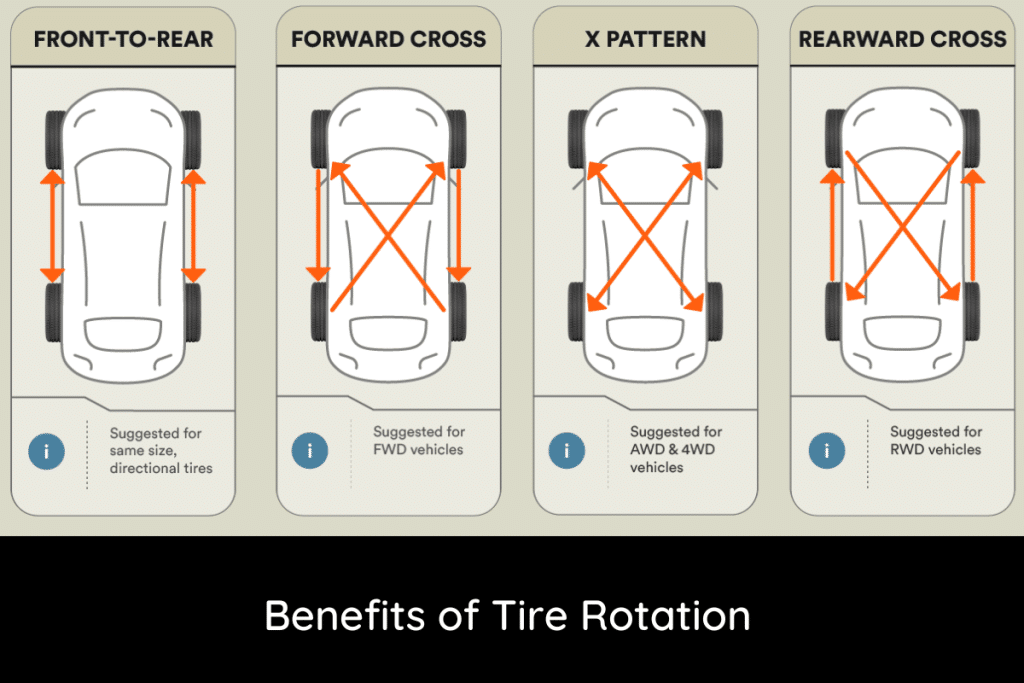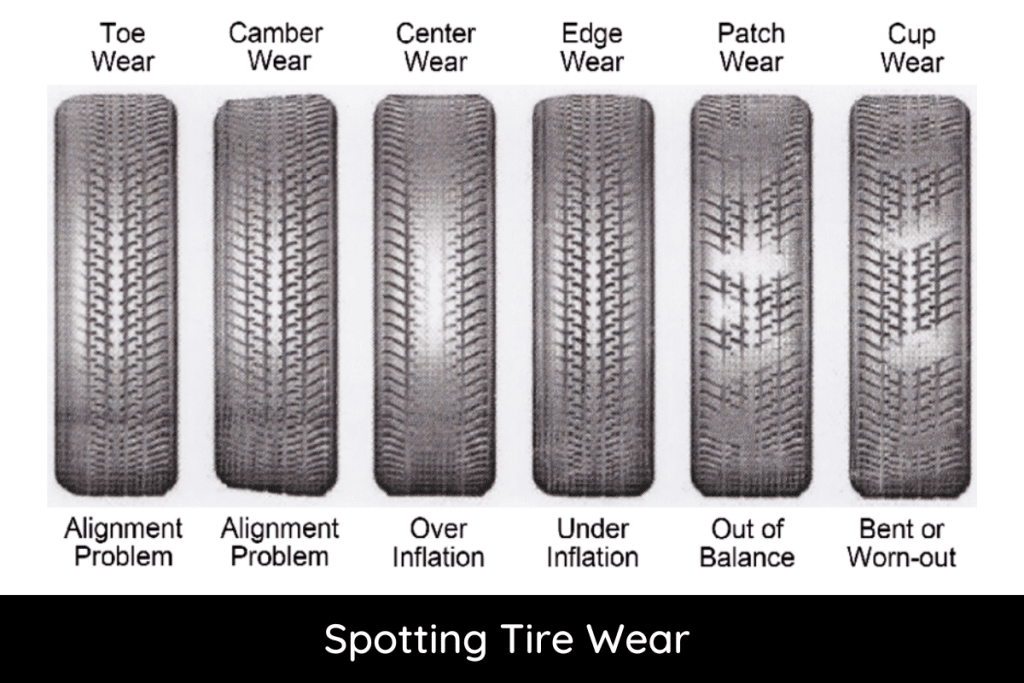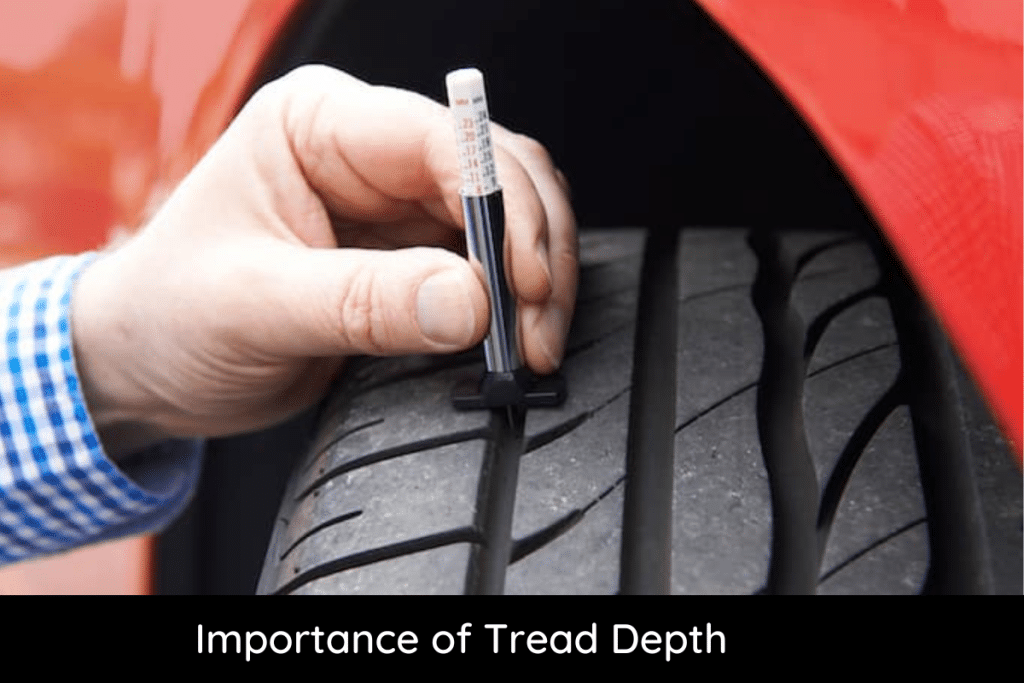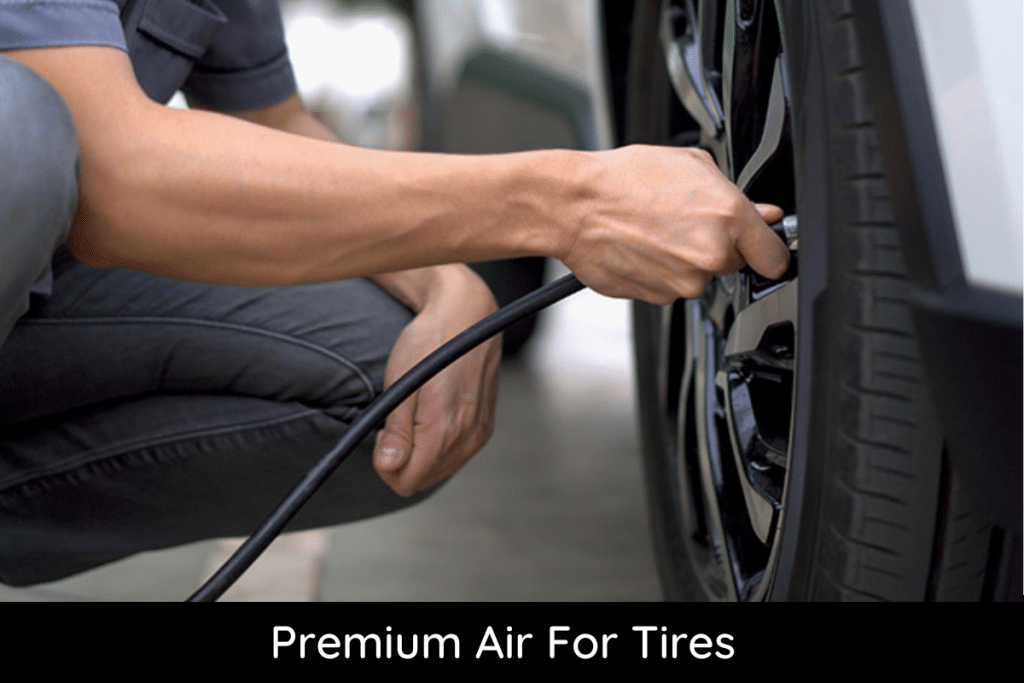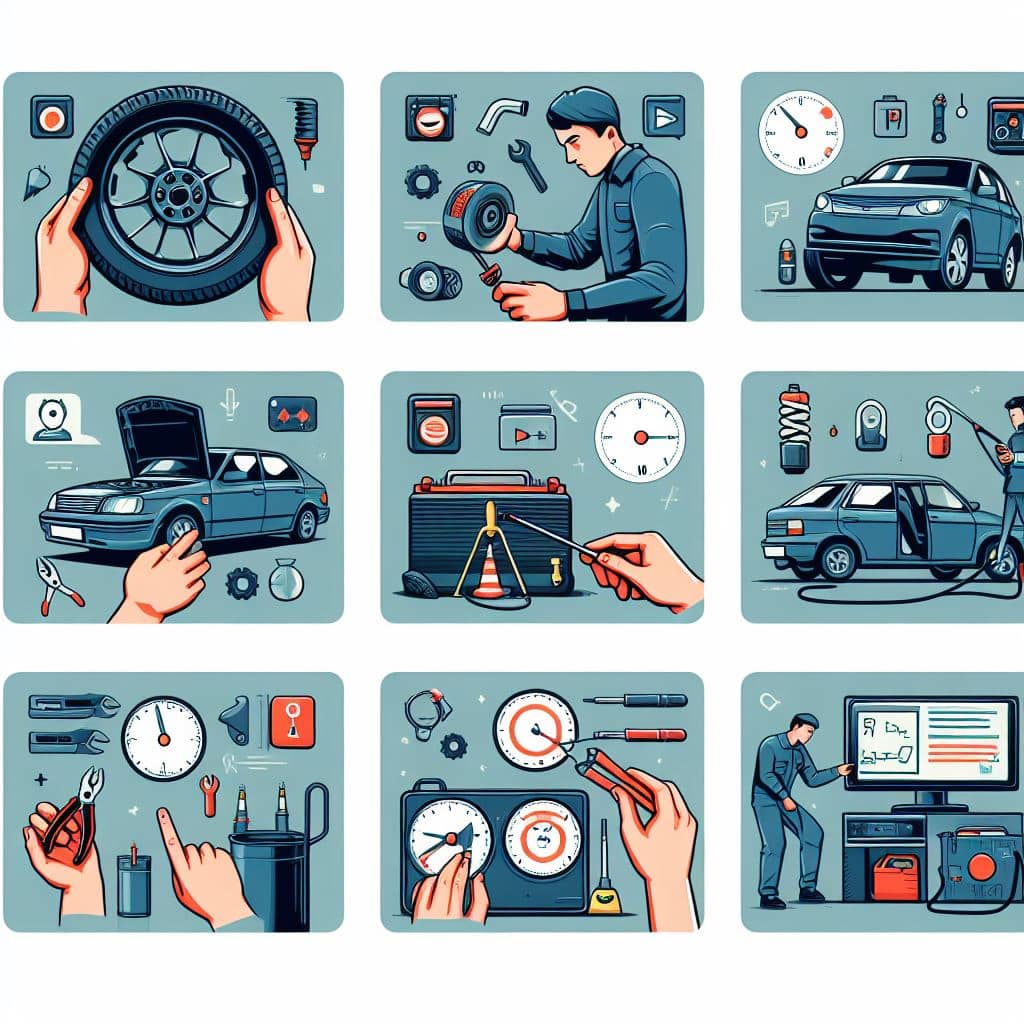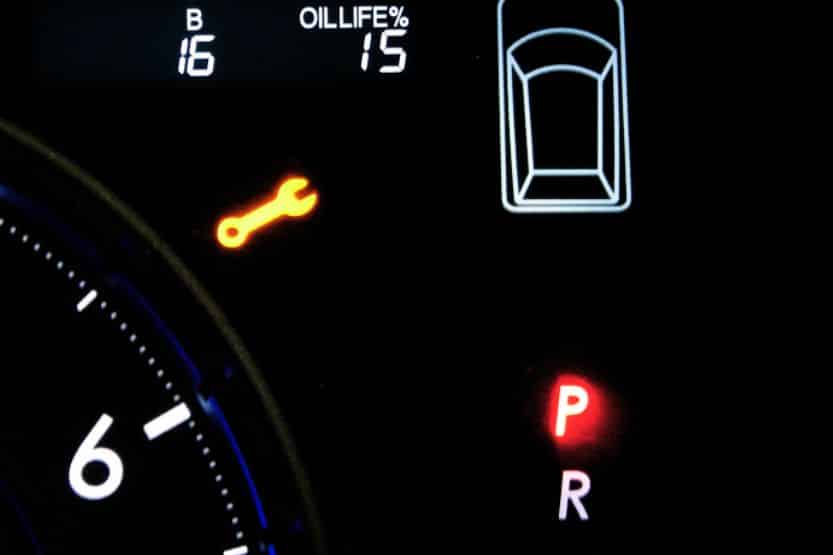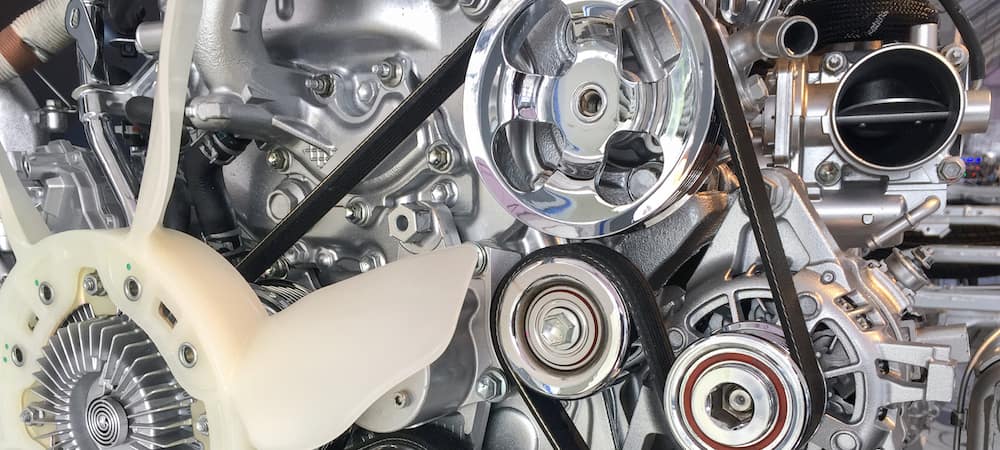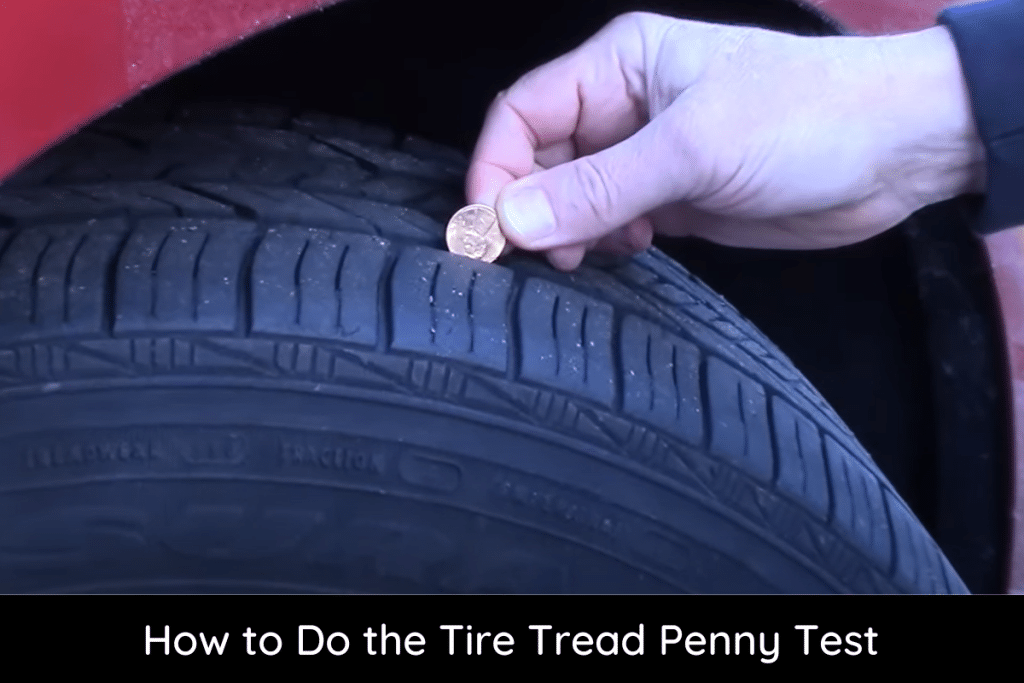
The penny trick is a simple and effective method for checking the tread depth of your tires. To perform the test, follow these steps:
- Place a penny between the tread ribs on your tire, with Lincoln’s head facing down into the tread.
- Turn the penny so Lincoln’s head is no longer visible between the ribs.
- If you can see the entire head of Lincoln, it may be time to replace the tire because the tread is no longer deep enough.
Tire tread depth is measured in 32nds of an inch, and new tires typically have a tread depth of 10/32″ or 11/32″. The U.S. Department of Transportation recommends replacing tires when they reach 2/32″. Many states legally require tires to be replaced at this depth.
While the penny test is a useful tool for checking tire tread depth, it is essential to remember to check each tire and perform the test multiple times to assess the tire’s condition accurately. If you are unsure about the results or need professional advice, consult a tire shop for a more thorough evaluation.
Why Tread Depth Matters: Your Grip on Safety
Imagine your tires as the shoes you wear every day. Just like worn-out soles make it trickier to walk on slippery surfaces, tires with shallow tread struggle to grip the road when conditions get rough. Let’s dive into why tread depth matters so much in different weather scenarios:
Wet Roads: When it rains, water accumulates on the road, turning it into a slimy obstacle course for your tires. Deeper tread grooves act like tiny channels, efficiently whisking water away from the contact patch, preventing your car from hydroplaning – that scary moment when your tires lose contact with the road and you become a passenger on a water sled.
A shallow tread means less water displacement, increasing the risk of losing control and potentially causing accidents.
Read Also: Best tires for Hyundai Kona
Snow and Ice: Winter brings even bigger challenges for tires. Deep snow acts like a fluffy blanket, and deeper tread cuts through it, gripping the harder surface beneath. Think of it like your boots sinking into fresh powder compared to barely making a dent.
Shallow tread skims the surface, reducing traction, difficulty braking, and increased chances of getting stuck. On icy roads, deeper grooves bite into the ice, providing some semblance of control compared to bald tires that slide across the frozen surface.
Legal Minimums and Beyond: While the penny trick gives you a quick heads-up, most regions have a legal minimum tread depth requirement, often around 2/32nds of an inch. Driving with tires below this can result in fines, but more importantly, it’s a serious safety hazard.
Remember, the legal minimum is just that – the bare minimum. For optimal safety in all weather conditions, experts recommend replacing tires when they reach 4/32nds of an inch.
The Cost of Neglect: Worn tires aren’t just a safety risk but also a financial drain. Studies show that tires with shallower tread wear out faster, meaning you’ll need to replace them more often. Additionally, worn tires affect fuel efficiency, making your car guzzle more gas.
Statistics Speak Volumes: Every year, thousands of accidents happen due to worn tires. According to the National Highway Traffic Safety Administration, in 2019 alone, over 700 fatalities and 35,000 injuries were linked to tire-related problems. By prioritizing proper tread depth, you’re not just protecting yourself. You’re protecting everyone on the road.
Don’t let worn tires gamble with your safety. Remember, proper tread depth is the invisible grip that keeps you in control, no matter the weather. Invest in your tires, invest in your peace of mind.
The Penny Trick’s Limits: When Guesswork Isn’t Enough
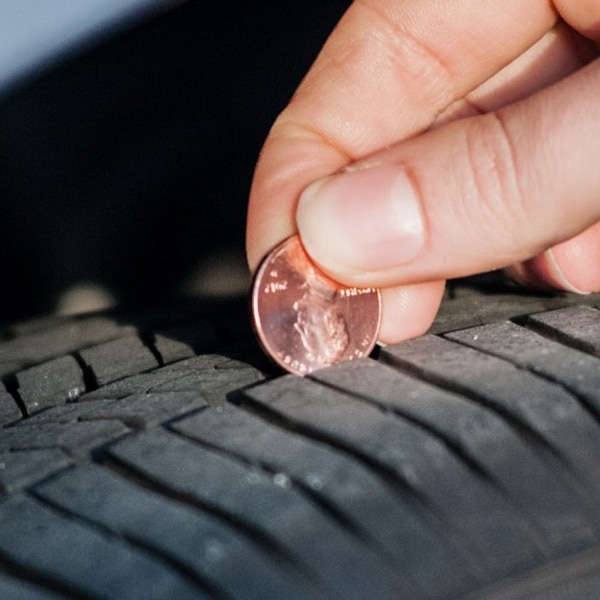
While the penny trick is a handy and accessible way to get a quick sense of your tire tread depth, it’s crucial to understand its limitations:
1. Rough Estimator: The penny test is just that – a test. It can give you a ballpark idea, but it’s not a substitute for a precise measurement. Wear patterns can vary across the tire, and the penny doesn’t account for subtle differences.
2. Misses the Legal Mark: The penny disappears at 2/32nds of an inch, which is the legal minimum in many regions. While that might indicate safe travel for some, experts recommend replacing tires at 4/32nds for optimal safety. The penny trick simply doesn’t provide that level of detail.
3. Ignores Hidden Dangers: Worn-out tires aren’t just about tread depth. Bulges, cracks, and uneven wear can indicate internal damage invisible to the penny. A proper inspection by a professional or a dedicated tread depth gauge can uncover these hidden threats.
Therefore, while the penny trick is a useful starting point, for true peace of mind, switch to a dedicated tread depth gauge. These handy tools are readily available and affordable.
Here’s a quick guide to using one:
- Locate the tread wear indicators: These raised bars within the tread grooves show the minimum legal tread depth.
- Insert the gauge probe: Place the probe perpendicular to the groove, pushing it firmly until it touches the base of the tread.
- Read the measurement: The gauge will display the remaining tread depth on a scale. Compare it to the recommended minimum (4/32nds) and the legal limit in your region.
Read Also: Quietest Tires For Subaru Outback
Remember, your tires are your vital connection to the road. Don’t let guesswork compromise your safety. Invest in a tread depth gauge and make informed decisions about your tire health.
Conclusion
The penny trick, while a handy initial check, has its limitations. Just like the worn treads in the image below, relying solely on the penny can give you a false sense of security.
Remember, your tires are the crucial link between your car and the road. To truly prioritize safety, embrace a more comprehensive approach:
- Regularly check your tire tread depth – not just with the penny, but with a dedicated tread depth gauge or professional inspection.
- Maintain proper tire pressure: Inflated tires handle better and wear more evenly.
- Rotate your tires at recommended intervals: This ensures even wear and tear, maximizing their lifespan.
- Inspect your tires for bulges, cracks, or uneven wear: These signs might indicate internal damage, requiring immediate attention.


